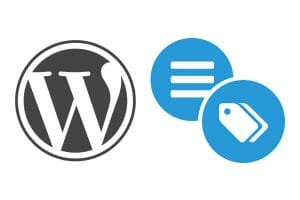How to Use Tags with Good SEO in WordPress 02 Feb 2021
If I asked the vast majority of website owners ‘what brings in the majority of your traffic’, the top answer would be ‘my articles of course’ and that is a completely acceptable answer.
articles of course’ and that is a completely acceptable answer.
But, a better answer would be ‘my articles, but I also gain a lot of traffic from my categories and tags’.
Now we are talking.
This is because categories and tags play quite a crucial role in website traffic, organizational structure, and SEO. Up to this point, from reading around, it seems categories are given some merit, but tags are generally not used/used inappropriately or are told to be deindexed by search engines. I’m here to tell you that if you use your categories and tags correctly, you could increase your traffic by quite a lot, with auto generating content that takes up a fraction of your time. For me, this number was a 40% increase.
WordPress Categories Optimization
Categories are an effective way to archive articles under a category heading to organize a website. There are many benefits to doing this:
- It helps your web users browse similar content on your website
- It helps Google better understand what your content is about
- It helps the architectural structure of your website, by having content under categories – this helps give a better understanding for Google and web users what your website is about
For example, let’s take an example of a bakery recipe blog that creates recipes for a range of bakery products. Effectively categories for this could be:
- Cookie Recipes
- Bread Recipes
- Cake recipes
- Pastry Recipes
- etc.
This ultimately tells people what your site is about, and how they can better explore your content. As well as this, it gives more indication to Google what your content is about, even before crawling the content itself.
For even better SEO, it could be a good idea to include the category in the prefix of your URL too. That way, your website structure is reflected in your URL for all of your content.
As well as this, you can create hierarchal categories, such as a category beneath a category – again, this helps
WordPress Tags Optimization
Tags work in a similar fashion to categories but are more flexible than categories. They are meant to describe details within a post, rather than what your whole post is about.
So, for example, with the bakery recipe website example, effective tags could be:
- Gluten-free
- Vegan
- Vegetarian
- Chocolate
- Wheat-free
- Wholewheat
- Low Calorie
- High in Protein
- etc.
From doing this, you can the following benefits:
- Your related posts can be more specific to what the web user is likely to like if you use both categories and tags to determine the related posts to show
- You automatically create many pages that have articles on them, all more specific than what the categories show
- If you index these with Google, you open the door to more possibilities for ranking for keywords
The main argument to no-index tag pages is that there is a risk of duplicated content. However, if you make sure to create sensible tags, and update the meta description, meta title and have around 100-200 words of content per tag, you will be onto a winner.
Will Green
Will created Ask Will Online back in 2010 to help students revise and bloggers make money developing himself into an expert in PPC, blogging SEO, and online marketing. He now runs others websites such as Poem Analysis, Book Analysis, and Ocean Info. You can follow him @willGreeny.
|
Recommended posts
|

